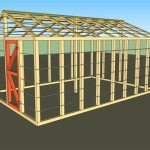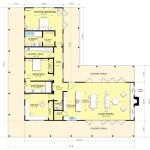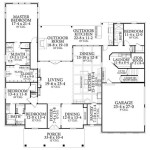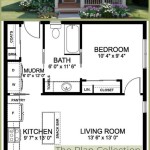House planning books are comprehensive guides that provide practical advice and inspiration for individuals planning or designing their own homes. They cover a wide range of topics, from architectural styles and floor plans to materials and fixtures. For example, a house planning book may include detailed instructions on how to create a cohesive design for a modern farmhouse or provide guidance on selecting the most energy-efficient appliances for a sustainable home.
These books serve as invaluable resources for homeowners, empowering them to make informed decisions about their dream homes. Whether you are building from scratch or remodeling an existing space, house planning books can help you navigate the complexities of the design process and create a home that perfectly suits your needs and aspirations.
In this article, we will delve into the key elements of house planning books, exploring the different types available, their benefits, and how to choose the right one for your project. We will also provide examples of popular house planning books to help you get started on your journey to designing your perfect home.
When selecting a house planning book, there are several key points to consider:
- Scope: Narrow or broad coverage of topics
- Style: Specific architectural styles or general guidance
- Floor Plans: Variety and complexity of plans included
- Materials: Focus on particular materials or comprehensive overview
- Sustainability: Emphasis on eco-friendly design principles
- Budget: Cost-effective options or high-end luxury designs
- Visuals: Quality and quantity of photos, illustrations, and diagrams
- Author Expertise: Credentials and experience of the author
- Reviews: Feedback and ratings from other readers
By considering these factors, you can choose a house planning book that aligns with your specific needs and preferences.
Scope: Narrow or broad coverage of topics
Scope refers to the range of topics covered in a house planning book. Some books focus on a specific aspect of home design, such as floor plans or materials, while others provide a comprehensive overview of the entire process. Consider your needs and interests when choosing a book that offers the appropriate level of detail.
- Narrow scope: Focus on a specific topic, such as small house designs, sustainable building practices, or kitchen planning. These books provide in-depth information and specialized guidance on a particular area of interest.
Example: “Small House Living: Practical Designs for Comfortable, Affordable Homes” by Shay Salomon
- Broad scope: Cover a wide range of topics, from architectural styles and floor plans to materials and fixtures. These books offer a comprehensive overview of the entire house planning process, providing a solid foundation for both beginners and experienced homeowners.
Example: “The Complete Book of Home Design: Everything You Need to Know from Planning to Finishing” by Monte Burch
Ultimately, the best scope for you depends on your level of experience and the specific areas you want to focus on. If you are starting from scratch, a broad scope book can provide a solid foundation. If you have a specific area of interest, a narrow scope book can offer in-depth guidance.
Style: Specific architectural styles or general guidance
Style refers to the architectural style or styles that a house planning book focuses on. Some books cover a wide range of styles, providing inspiration and guidance for homeowners with diverse tastes. Others focus on a specific style, offering in-depth information and design principles for a particular aesthetic.
- General guidance: Cover a wide range of architectural styles, providing a broad overview of the key elements and characteristics of each style. These books are helpful for homeowners who are exploring their options and want to get a sense of the different styles available.
Example: “The House Planning Guide: A Complete Guide to Planning and Designing Your Perfect Home” by Michael Litchfield
- Specific style: Focus on a particular architectural style, such as modern farmhouse, craftsman, or contemporary. These books provide detailed information on the design principles, materials, and construction techniques specific to that style, offering a comprehensive guide for homeowners who want to create a home that reflects a particular aesthetic.
Example: “Modern Farmhouse: Timeless Design for Casual Living” by Joanna Gaines
The best style for you depends on your personal preferences and the type of home you want to build or remodel. If you are unsure about your style, a general guidance book can help you explore your options. If you have a specific style in mind, a book dedicated to that style will provide you with the in-depth information you need to create your dream home.
Floor Plans: Variety and complexity of plans included
The variety and complexity of floor plans included in a house planning book is an important consideration for homeowners. Some books offer a limited number of basic floor plans, while others provide a wide range of plans with varying levels of complexity.
- Limited floor plans: A small number of basic floor plans, typically ranging from one to two stories. These books are suitable for homeowners who have a clear idea of the size and layout they want for their home and are not interested in extensive customization.
Example: “The Weekend Home Book: 50 Affordable Designs You Can Build Yourself” by David Stiles
- Variety of floor plans: A wide range of floor plans, including small, medium, and large homes, as well as single-story, two-story, and multi-story designs. These books offer more options for homeowners to choose from, allowing them to find a plan that closely matches their needs and preferences.
Example: “The Complete Book of Home Design: Everything You Need to Know from Planning to Finishing” by Monte Burch
- Complex floor plans: A collection of floor plans that are more complex in design, featuring unique features such as open floor plans, vaulted ceilings, and custom layouts. These books are suitable for homeowners who want a home that is tailored to their specific lifestyle and needs.
Example: “Dream Homes: 101 Floor Plans for the Home of Your Dreams” by Better Homes and Gardens
- Customizable floor plans: A selection of floor plans that can be customized to meet the specific needs of homeowners. These books typically provide instructions on how to modify the plans to change the size, layout, and features of the home.
Example: “The House Planning Guide: A Complete Guide to Planning and Designing Your Perfect Home” by Michael Litchfield
The variety and complexity of floor plans in a house planning book can help homeowners narrow down their options and find a plan that meets their specific needs and preferences. It is important to consider the size, layout, and features that are important to you when choosing a book.
Materials: Focus on particular materials or comprehensive overview
The focus on materials in a house planning book refers to the level of detail and guidance provided on the selection and use of building materials. Some books focus on specific materials, such as sustainable materials or luxury finishes, while others provide a comprehensive overview of a wide range of materials.
- Focus on particular materials: Provide in-depth information on a specific type of material, such as concrete, wood, or steel. These books offer detailed guidance on the properties, applications, and installation techniques for the chosen material, making them valuable resources for homeowners who want to build or remodel using a particular material.
Example: “The Concrete Home: Design and Construction” by Fred A. Stitt
- Comprehensive overview of materials: Cover a wide range of building materials, including traditional and innovative options. These books provide a broad understanding of the different materials available, their properties, and their suitability for different applications. They are helpful for homeowners who are exploring their options and want to make informed decisions about the materials they use.
Example: “Building Materials: A Guide to Their Properties and Applications” by S.K. Ghosh
The focus on materials in a house planning book can help homeowners select the right materials for their project, ensuring durability, functionality, and aesthetic appeal. Whether you are interested in a specific material or want a comprehensive overview, there is a book available to meet your needs.
Sustainability: Emphasis on eco-friendly design principles
Sustainability in house planning refers to the incorporation of eco-friendly principles and practices into the design and construction of a home. House planning books that focus on sustainability provide guidance on how to create homes that minimize environmental impact, conserve resources, and promote occupant health and well-being.
These books cover a wide range of topics related to sustainable home design, including:
- Site selection: Choosing a building site that minimizes environmental impact, considers solar orientation, and takes advantage of natural resources.
- Energy efficiency: Incorporating passive and active design strategies to reduce energy consumption, such as maximizing natural light, using energy-efficient appliances, and installing renewable energy systems.
- Water conservation: Implementing water-saving fixtures, rainwater harvesting systems, and drought-tolerant landscaping.
- Material selection: Using sustainable and recycled materials, such as bamboo, recycled steel, and reclaimed wood, to reduce environmental impact and promote resource conservation.
- Indoor air quality: Prioritizing the use of low-VOC (volatile organic compound) materials, ensuring proper ventilation, and incorporating natural elements to create a healthy and comfortable indoor environment.
- Waste reduction: Designing homes that minimize waste during construction and occupancy, promoting recycling and composting, and incorporating features that extend the life of the home.
By incorporating these principles into their designs, homeowners can create homes that are not only beautiful and functional but also environmentally responsible and sustainable for future generations.
Budget: Cost-effective options or high-end luxury designs
When choosing a house planning book, it is important to consider the budget for your project. House planning books can range in price from affordable options suitable for budget-conscious homeowners to high-end luxury designs that cater to those seeking the ultimate in style and sophistication.
Cost-effective options: These books provide practical and affordable design solutions for homeowners who are looking to build or remodel on a budget. They typically feature a range of cost-effective floor plans, material recommendations, and construction techniques that can help homeowners save money without sacrificing quality or style.
Example: “The Affordable Home: A Step-by-Step Guide to Building Your Dream Home on a Budget” by John Riha
High-end luxury designs: These books showcase the latest trends and innovations in luxury home design, featuring stunning floor plans, high-end materials, and exclusive design features. They are ideal for homeowners who are looking to create a truly unique and opulent home.
Example: “Luxury Homes: The Ultimate Collection of the World’s Most Extraordinary Homes” by Taschen
Ultimately, the best budget for a house planning book depends on your financial situation and the scope of your project. Whether you are looking for cost-effective solutions or high-end luxury designs, there is a book available to meet your needs and budget.
Visuals: Quality and quantity of photos, illustrations, and diagrams
The quality and quantity of visuals in a house planning book play a crucial role in helping homeowners visualize the designs and make informed decisions. Visuals can include photographs of completed homes, illustrations of floor plans and elevations, and diagrams of construction details.
- High-quality photographs: Clear and well-lit photographs of completed homes allow homeowners to see the finished product and get a sense of the overall style, layout, and curb appeal. They can also showcase specific design features, such as unique rooflines, window treatments, and landscaping.
Example: “Dream Homes: 101 Floor Plans for the Home of Your Dreams” by Better Homes and Gardens features stunning photography of a wide range of home designs.
- Detailed illustrations: Detailed illustrations of floor plans and elevations provide a clear understanding of the layout and dimensions of the home. They allow homeowners to visualize the flow of traffic, the placement of rooms, and the relationship between interior and exterior spaces.
Example: “The House Planning Guide: A Complete Guide to Planning and Designing Your Perfect Home” by Michael Litchfield includes detailed floor plans and elevations for a variety of home styles.
- Informative diagrams: Diagrams of construction details provide valuable insights into the technical aspects of the home’s design and construction. They can illustrate structural elements, such as framing and foundation systems, as well as mechanical systems, such as plumbing and electrical layouts.
Example: “The Complete Book of Home Design: Everything You Need to Know from Planning to Finishing” by Monte Burch includes numerous diagrams that explain complex construction details.
- Quantity of visuals: The quantity of visuals in a house planning book is also important. A sufficient number of visuals allows homeowners to thoroughly examine the design and make informed decisions. It is helpful to have a variety of visuals, including photographs, illustrations, and diagrams, to provide a comprehensive understanding of the home’s design.
Example: “The Homeowner’s Blueprint: The Essential Guide to Planning and Building Your Own Home” by Monte Burch includes over 500 illustrations and diagrams that provide a detailed overview of the home building process.
By carefully considering the quality and quantity of visuals in a house planning book, homeowners can gain a clear understanding of the design and make informed decisions about their dream home.
Author Expertise: Credentials and experience of the author
The author’s credentials and experience play a significant role in the quality and reliability of a house planning book. When choosing a book, consider the following factors:
- Professional background: Look for authors with a background in architecture, engineering, construction, or a related field. This indicates that they have the technical knowledge and expertise to provide sound advice on home design and construction.
- Education and certifications: Authors with advanced degrees in architecture, engineering, or interior design have a strong foundation in the principles of home design. Certifications, such as LEED (Leadership in Energy and Environmental Design) or NCARB (National Council of Architectural Registration Boards), demonstrate specialized knowledge and professional recognition.
- Experience in residential design: Authors with extensive experience in designing and building homes have a deep understanding of the practical aspects of home planning. They can provide valuable insights into the design process, construction methods, and potential challenges.
- Published books and articles: A track record of published books and articles in reputable publications indicates the author’s expertise and ability to communicate complex technical information clearly and effectively.
- Industry recognition and awards: Awards and recognition from professional organizations or industry publications demonstrate that the author’s work is highly regarded within the field.
By considering the author’s credentials and experience, homeowners can choose a house planning book that is written by a qualified expert who can provide reliable guidance on their home design project.
In addition to the above factors, it is helpful to read reviews and testimonials from other readers to get a sense of the author’s writing style, clarity, and overall reputation.
Reviews: Feedback and ratings from other readers
Reviews and ratings from other readers can provide valuable insights into the quality and usefulness of a house planning book. Before making a purchase, take the time to read reviews from both experts and homeowners who have used the book.
- Expert reviews: Look for reviews from
- Homeowner reviews: Homeowners who have
- :
- :



:max_bytes(150000):strip_icc()/UltimateBookOfHomePlans-5c6458eac9e77c000159cad0.jpg)






Related Posts








